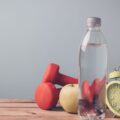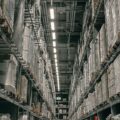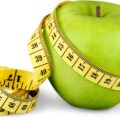Which Of The Following Does Not Constitute Spillage
When it comes to determining what constitutes spillage, it’s important to have a clear understanding of the factors involved. Spillage refers to the unintentional release or leakage of substances, typically liquids, from their intended containers or storage areas. However, not everything that spills can be classified as spillage. So, which of the following does not constitute spillage? Let’s explore some possibilities.
Firstly, it’s essential to note that minor drips or splatters that occur during daily activities like cooking or cleaning may not necessarily qualify as spillage. These small amounts of liquid are often considered incidental and can be easily cleaned up without causing any significant damage.
Secondly, if a substance is intentionally poured out or released in a controlled manner for a specific purpose, such as pouring a drink into a glass or emptying a bucket of water onto plants in the garden, this action would not generally be categorized as spillage. In these cases, the liquid is being deliberately directed and managed.
If you like seeing this kind of content, keep reading our next page!
Lastly, when dealing with solid materials like grains or powders that accidentally scatter due to mishandling or external forces (such as wind), this would typically be referred to as scattering rather than spillage. While scattering may cause some inconvenience and require cleanup, it doesn’t fall under the definition of spillage.
In conclusion, while spills can happen in various situations and contexts, it’s important to distinguish between true instances of spillage and other forms of accidental liquid release that may not meet the criteria. By understanding what constitutes spillage and what does not, we can better address containment measures and minimize environmental risks associated with unintended releases.

Understanding Spillage
Spillage is a term commonly associated with the accidental release or leakage of substances, liquids, or materials. It can occur in various settings, such as industrial facilities, laboratories, or even everyday household environments. In order to better understand what constitutes spillage and what does not, let’s take a closer look at its definition and some examples.
- Definition of Spillage: Spillage refers to the unintentional escape or dispersal of a substance from its intended containment area. It typically involves the transfer of liquids from their designated containers onto surfaces they were not meant to come into contact with.
- Common Causes of Spillage: Spills can happen due to a variety of reasons including human error, equipment failure, improper handling or storage practices, accidents during transportation, or natural disasters like earthquakes or floods.
- Examples of Substances that Constitute Spillage: Several types of substances are commonly associated with spillage incidents:
- Liquids: Oil, chemicals, cleaning agents
- Granular Materials: Grain, sand
- Powders: Flour, cement
- Gases: Propane, chlorine
- Factors Affecting the Severity of Spills: The impact and severity of a spill depend on various factors:
- Quantity and Concentration: The amount and potency of the spilled substance.
- Location: Whether the spill occurs indoors or outdoors.
- Surface Type: Porous surfaces may absorb liquids more readily than non-porous ones.
- What Does Not Constitute Spillage: While it’s important to understand what does constitute spillage for safety purposes, it is equally crucial to recognize situations that do not fall under this category:
- Controlled Transfer: When substances are intentionally poured or transferred between containers without any accidental release.
- Evaporation/Disappearance: When volatile substances naturally evaporate without leaving any residue or impact on the surrounding areas.
- Minimal Leakage: When a negligible amount of substance escapes during normal operations and does not pose any significant risk to safety or the environment.
Remember, proper handling, storage, and containment practices are essential in preventing spillage incidents. By being aware of potential hazards and taking necessary precautions, we can minimize the risks associated with spills and ensure a safer working or living environment for everyone.
In summary, understanding spillage involves recognizing its definition, common causes, examples of substances involved, factors affecting severity, as well as situations that do not constitute spillage. This knowledge empowers us to take proactive measures in preventing spills and maintaining safety in various settings.
My name is Andrea Thompson and I’m a home based freelance writer. I’m 23 years old, married to my best friend, and mother to a wonderfully independent and opinionated 3 year old girl and step-mother to a sweet seven year old boy. I live in a tiny, little town in Kentucky, where I spend my free time fishing with my kids.
Writing has always been my passion, which I followed through high school, and for a while in college. Life happened, and once I discovered we were pregnant, I switched directions; opting for the healthcare industry because of the stability.
Finally, years later, I was in a place where I could leave the day job that never truly made me happy, and pursue my dreams. I’ve built, and am still building, my writing career from scratch. But, I’m passionate and I’m good at what I do. And, in the end, I can prove to my daughter that she can do anything she wants with this life.





